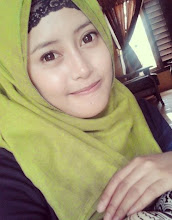OK, this is the end of this course,
same as last year project ... we had to make a group consisted of 4
members to observe in a school. My group is Ariza, Putri, Citra, and
me.We obsered a school in Nanggulan Salatiga named Kutowinangun 07
Salatiga, especially in fifth grade. In there, we made an assessment
tools using written test for fifth grader (science).
After
it was being tested, we corrected them, and making a data analysis
using SPSS. Wow ... in the first time we tried to analyzed it, many
problems came ^^ but finally we can do that, yeee ...
After that we had to presented that material in front of the class.
Oh, I really sorry I can not join our class today, ummm because I also had class in the same time
I know that we had to present our observation result today, I'm sorry friend :(Umm ...
OK this is just a brief reflection for my final project.
Thank you for Mr. Steve that had been being a good facilitator in this course. Thank you for the 2010 class that had accepted me well in your class.
Hope this is my last teaching assessment course, I do not want to repeat this course again, twice is enough :D
Bye ... nice to know you all, friends ^^


